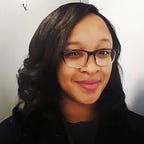You think you know, but you have no idea: My community, redefined.
When I was accepted into the Social Journalism program at CUNY J-School, I came with my community and possible solution in mind. My community was meant to be the formerly incarcerated. I thought a focus on entrepreneurship would solve the problem of financial issues caused by issues with employment due to having a record. Even though, the whole point of Social Journalism is to come with an open mind and listening ear rather than your own ideas, I figured I’d get ahead of the game. Wrong idea. I wasn’t totally off track, but projected my own ideas of what I thought my community needed. And I still think I have a great idea, but it’s not what is needed now.
Successful reentry is dependent on many factors, including one’s own desire for a different lifestyle upon release. So there is no blanket solution, but any effort is better than none at all. Throughout the semester I was fortunate enough to spend time with a few members of this community.
Coss Marte, who spent four years in prison on drug charges, is the founder and CEO of Conbody, which just opened a new location in Saks Fifth Avenue.
Mark Graham, was serving 20 years to life when he was released in 2001. In 2007, he opened The Redemption Center, a home for former inmates to make the transition to successful reentry.
Kathy Morse’s story is featured Bill Moyer’s documentary RIKERS: An American Jail. She served time for embezzlement charges. Morse is currently the Regional Assistant Manager at The Peetey Greene program, which provides tutoring and educational services for incarcerated students.
Marte, Graham, and Morse were fortunate to have been successful with reentry, but they don’t attribute that to any help they received inside. Most programs accept participants who have already been released.
Morse brought up an issue with intersectionality for reentry programs.
“All of these programs are geared towards men. The only thing that offers women reentry help and housing is Hour Children in Long Island City,” she said. But Hour Children doesn’t offer housing to women without children, and many find themselves in homeless shelters.
Prisons provide a variety of programs for incarcerated men and women, such as educational and arts programs, but nothing teaching practical knowledge and skill for reentry. When they go inside, life stands still for them, but even the smallest advancement in life can be a major setback for important efforts.
“There’s not even programs to help you catch up to technology. Someone getting an education will still need help knowing how to apply for jobs. Everything is online these days,” Morse said.
Looking back over research and my interaction with people in this community, has shown me entrepreneurship is somewhat of an extracurricular effort to the process of reentry. Yes it would help, but there are more basic, immediate needs that need to be met.
But what are they, and what can I do or think up by December to really make a difference?
So here is where I redefine my community. Women in prison face many challenges while incarcerated, including safety and hygiene. And upon release many may find themselves in shelters while trying to get back on their feet. Women of the criminal justice system are in special need of advocates, so I will take the rest of my time in this program focusing on incarcerated and formerly incarcerated women.
The process of learning about my community has gone well thus far and I’m looking forward to learning more and finding solutions for this population.
While I know this won’t be an easy feat, I plan to implement the skills and tools I learned in our Community Engagement course such as Purple to reach and be accessible to my community.
